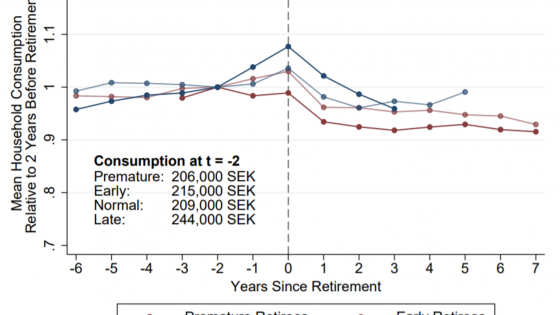Companies design incentive systems to motivate workers, and it works. Shifting from paying a worker fixed pay (per hour worked) to pay based on their individual performance can lead to substantial increases in worker productivity (Lazear 2000, Oyer and Shaw 2021). Perhaps surprisingly, paying workers based on collective performance, such as that of a team, department, or establishment, also increases worker productivity (Frederiksen et al. 2022). A key principle in designing incentive systems is to take into account the nature of the work and the environment. In some contexts, this may be straightforward (Paarsch and Shearer 2000), while in other contexts, companies need to experiment in order to learn what design works best (Bandiera et al. 2005). When incentives are designed for a particular context, potential tradeoffs between incentive strength, income risk, and unintended consequences (e.g. quality) can be considered. When a change in incentives stems from the external environment, such as through government regulation, a firm is forced to comply and must reconfigure its incentives based on the new economic environment.
The Age Discrimination in Employment Act (ADEA) is an example of how changes in incentive design stem from the external environment. The ADEA legislated an end to mandatory retirement at age 65 in the US in 1978 and was motivated by the concern that mandatory retirement discriminated against senior workers in terms of labour force opportunities. Obviously, the direct consequence of the law change was that senior workers could continue their active work life beyond 65, but there were substantial ripple effects that could be characterised as unintended. While Lazear (1979) showed that mandatory retirement served as an anchor in long-term incentive contracts commonly used at the time, this perspective did not permeate the policy discussion. Our recent study (Frederiksen and Manchester 2021) shows that the abolishment of mandatory retirement led to an unravelling of such long-term contracts and caused ripple effects that were consequential for personnel practices, including incentive provision, performance management, and termination decisions.
Why is this case so important to study? The ADEA challenged the use of long-term incentive contracts as they would become prohibitively expensive due to the lack of a fixed end (retirement) date. Because this law change destabilised the existing system of motivating workers, an alternative incentive system with closer alignment between performance and pay was needed. Indeed, the US saw a dramatic increase in the prevalence of performance pay starting in the years following the law change and, in turn, an increase in income inequality (Lemieux et al. 2009). Equally important is that European countries have ongoing discussions about the retirement age – primarily driven by increased longevity and pension systems under pressure. Consequently, some countries have increased the retirement age while others, such as Denmark, have abolished mandatory retirement altogether. Japan is another example where the retirement age is continuously being debated, and the discussions are typically fueled by concerns related to the ageing population and labour shortage. So, lessons learned in the past remain highly relevant for the future.
Before the ADEA, it was common to motivate workers through long-term contracts characterised by deferred compensation (Lazear 1979). Such contracts had steep wage profiles where a worker’s wage was below productivity early in the career but exceeded productivity in later years, including those years leading up to retirement. The workers were motivated by the fact that they would receive high wages late in their careers, incentivising them not to shirk so as not to risk losing their job and deferred compensation. The issue with such contracts is that workers are “overpaid” late in their career and their motivation to retire is limited, which explains the role of mandatory retirement in such contracts. With mandatory retirement, there is a balance between a worker’s productivity and pay over the life cycle; without mandatory retirement, this long-term contract becomes unstable and unravels.
The data we use to test for change in incentives stemming from the regulation change are from a large service-providing company (previously used by Baker et al. 1994). We find that the ADEA coincided with a flattening of the workers’ wage profile, which is consistent with an unravelling of long-term contracts and more alignment between performance and pay. We also find that performance ratings became increasingly important for earnings (pay growth and bonuses), further pointing towards a shift to performance pay.
While easy to comprehend, a shift from long-term contracting to performance pay is not easy to implement. One reason for the popularity of long-term contracting was that it was easy to use and maintain: workers were motivated to exert effort by an increasing wage profile and the risk of losing the job if shirking – all managers had to do was to assess if workers performed well enough to keep the job. Performance pay is very different. When pay is tied to performance, performance has to be accurately measured and requires a developed performance management system. Low-performance ratings have to be justified, high scores are costly to the firm, and variation in scores across workers produces inequality.
While a performance management system was present in the company prior to the ADEA, we find evidence of fundamental changes following the law change. The company made changes to how they assessed worker performance with a clear increase in usage of low and mid-range ratings (one, two, and three) and reduced usage of top scores (four and five). We also find that the span of control was significantly reduced. It is relatively easy to assess if a worker is performing at a sufficient level to keep their job, but it is much harder to assess a worker’s performance on a five-point scale accurately. This requires much effort from managers and, thus, the need for a much smaller span of control. These observations make it clear why firms preferred long-term contracting prior to the ADEA and corroborate the assertion that firms shifted to performance pay in the wake of the ADEA with substantial consequences for the performance management system, worker pay, and even the organisational structure, which became more manager heavy.
Even more intriguing are the more subtle responses and adjustments made by the company. As a consequence of the law change, the flattening of their wage profile was more pronounced for high-skilled workers as compared to low-skilled workers, implying that – everything else equal – the high-skilled workers faced much lower incentives from the age-wage profile alone after the law change. The company’s response was to make bonus payments more sensitive to performance for high-skilled workers relative to low-skilled workers after the change in the pay system and, in that way, preserve the relatively higher incentives it had for high-skilled workers.
Another interesting consequence of the abolishment of mandatory retirement at 65 is that older workers could now stay longer at the firm, thereby potentially blocking the promotion path for younger workers. Given such paths serve as another form of motivation for workers, the law change also disturbed these incentives. Indeed the promotion probability for younger workers declined in the years following the ADEA. This decline was, however, counteracted by the company through higher pay premia upon promotion such that promotion incentives were preserved.
So, what are the lessons learned? The first message is uplifting for the profession of economics: companies behave as our economic toolbox predicts. A shift from long-term contracting to performance pay has predictable implications, and they are confirmed by the firm and worker’s behaviour. This is not just confirmed by one isolated empirical finding but a broad set of empirical evidence that shows that the company, using sophisticated adjustments, actively responded to changes in ways that preserved worker incentives.
The other message is intended for policymakers. While constituents may advocate loudly for a law change, politicians need to seek an understanding of the potential downstream implications. In our study, we can trace the effects of the ADEA on changes in earnings profiles through changes in performance management and multiple dimensions of incentives, all the way to organisational structure. Such ripple effects go deep and they are dramatic and costly for firms and workers. While politicians may be tempted to focus on the first-order effects, attention is needed to unintended consequences. Based on our evidence, governments pushing for increased retirement age and abolishment of mandatory retirement are also, in fact, pushing for more performance pay, greater income inequality, and increased costs for firms.
References
Baker, G, M Gibbs, and B Holmstrom (1994), “The internal economics of the firm: Evidence from personnel data”, The Quarterly Journal of Economics 109(4): 881-919.
Bandiera, O, I Barankay and I Rasul (2005), “Social preferences and the response to incentives: Evidence from personnel data”, The Quarterly Journal of Economics 120(3): 917-962.
Frederiksen, A, D Hansen and C F Manchester (2022), “How group-based incentives increase worker performance”, VoxEU.org, 18 August.
Frederiksen, A and C F Manchester (2021), “Personnel practices and regulation: How firm-provided incentives respond to changes in mandatory retirement law”, Journal of Labor Economics 39(4): 1011-1042.
Lazear, E P (1979), “Why is there mandatory retirement?”, Journal of Political Economy 87(6): 1261–1284.
Lazear, E P (2000), “Performance pay and productivity”, American Economic Review 90(5): 1346–1361.
Lemieux, T, W Macleod and D Parent (2009), “Performance pay and wage inequality”, The Quarterly Journal of Economics 124(1): 1-49.
Oyer, P and K Shaw (2021), “Edward Lazear: Personnel, policy, and productivity”, VoxEU.org, 9 January.
Paarsch, H J and B Shearer (2000), “Piece rates, fixed wages, and incentive effects: statistical evidence from payroll records”, International Economic Review 40(1): 59-92.



